In the world of whale watching, being “mugged” is considered cute, while seagulls are murderous villains that need to be shot, and not just with a camera. For most though, there’s nothing quite like getting up close to a giant of the ocean, seeing a humpback breach or a minke eye you up.
Here are some of the best places to grab your camera, point, click and “ooh”:
Cunningham Inlet, Nunavut, Canada: For beluga whales

Approximately 2,000 beluga whales visit Cunningham Inlet for about four weeks each year. Whales can be observed thrashing about, playing and making lots of noise just a couple of meters from the shore. If boats make you seasick, this is the whale watching spot for you.
Richard Weber, who owns Arctic Watch Lodge with his wife, recommends the last week of July for visitors who want to see the highest concentration of belugas. Tours run from early July to early August.
Box 1252, Yellowknife, NWT, X1A 2N9, Canada; +1 (819) 923-0932
The Azores: For blue whales
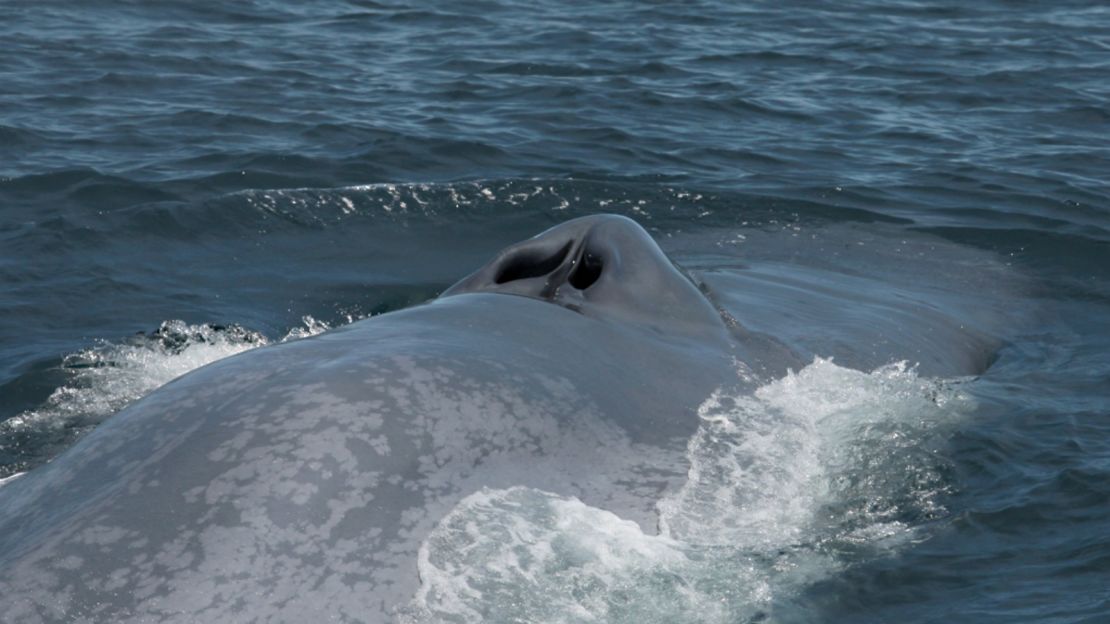
Every schoolchild knows that blue whales are the biggest animals in the world – they can reach 30 meters in length and weigh up to 200 tons. From March to May, the Azores are one of the best places to catch a glimpse of these giants, whose tongues can weigh as much as an elephant.
“When you see them through the water, they look like blue submarines,” says Lisa Steiner, a marine biologist with Whale Watch Azores. ” The size of the really large ones is indescribable.”
Whale Watch Azores tours include six days’ whale watching, accommodation and most meals. Half-day tours are available during the summer, although the chances of seeing a blue whale then are much diminished.
Rua do Paiol 12, Horta, Faial, Azores, Portugal; +351 292 293 891
Baja California, Mexico: For gray whales

These beautiful gray and white whales like to winter in Mexico. We can’t blame them. The calm lagoons of Baja California host these gray leviathans (up to 15.3 meters long) from mid-January to mid-April before they embark on an incredible 20,000-kilometer annual migration to Alaska and back.
José de Jesús Varela Galván, oceanologist and director of Ecoturismo Kuyimá, particularly recommends visiting the San Ignacio lagoon for whale watching, where gray whales mate and give birth.
Ecoturismo Kuyimá, SPR de RL, Morelos #23, esq. Miguel Hidalgo, Zona Centro, San Ignacio, BCS 23930, Mexico; + 52 615 154 00 70
Hervey Bay, Australia: For humpback whales

Grown humpback whales can weigh 36,000 kilos and have distinctive knobbly heads. Hervey Bay is known as the home of the humpbacks, according to Jill Perry who owns Hervey Bay Whale Watch with her husband Brian.
Humpbacks feed only in the summer, then migrate to new climates for the winter months where they mate and give birth while living off their fat reserves. As Hervey Bay is a top destination for summer feeding, whale sightings are guaranteed from mid-July to the end of October.
Hervey Bay Whale Watch offer passes for one, two or three days, and runs daily whale watching trips in season.
P.O. Box 7334, Urangan, Hervey Bay 4655, Queensland, Australia; + 61 7 4128 9611
Antarctic Peninsula: For minke whales
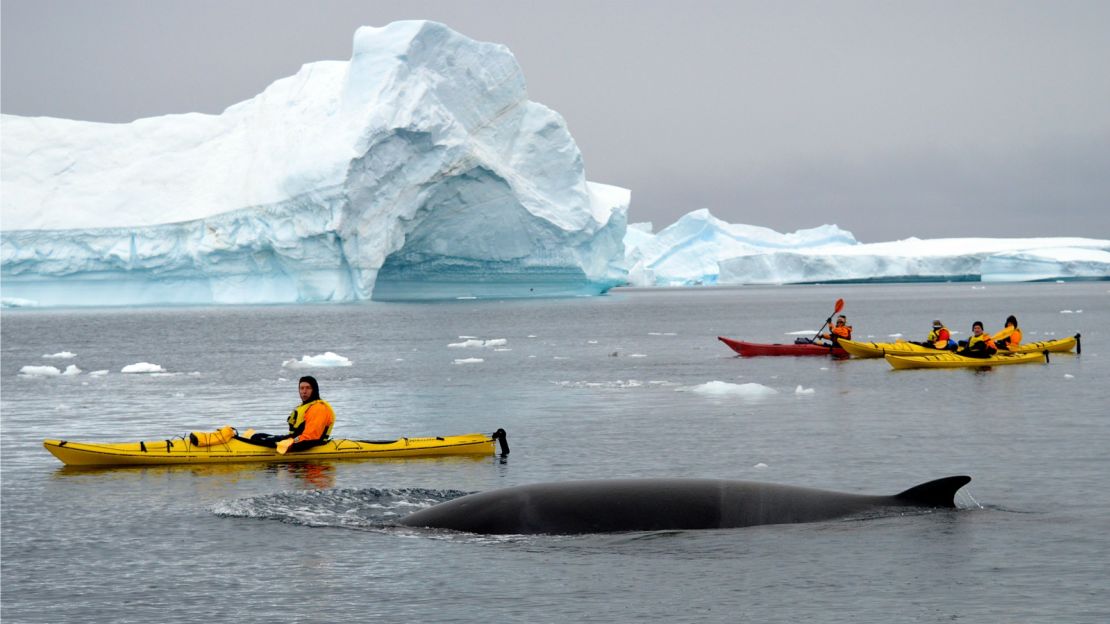
The sleek black/gray minke whales are most common in the Antarctic Peninsula and can be seen from November to March.
Bill Davis, the vice president of expeditions operations at Quark Expeditions, recommends whale watching during February and March, when the whales are the most interactive and friendly towards human spectators, sometimes approaching the boats of their own accord.
Quark Expeditions offer tours from early November until early March.
3131 Elliott Avenue, Suite 300, Seattle, WA 98121, USA; +1 802 490 1731
Nunavut, Canada: For narwhals
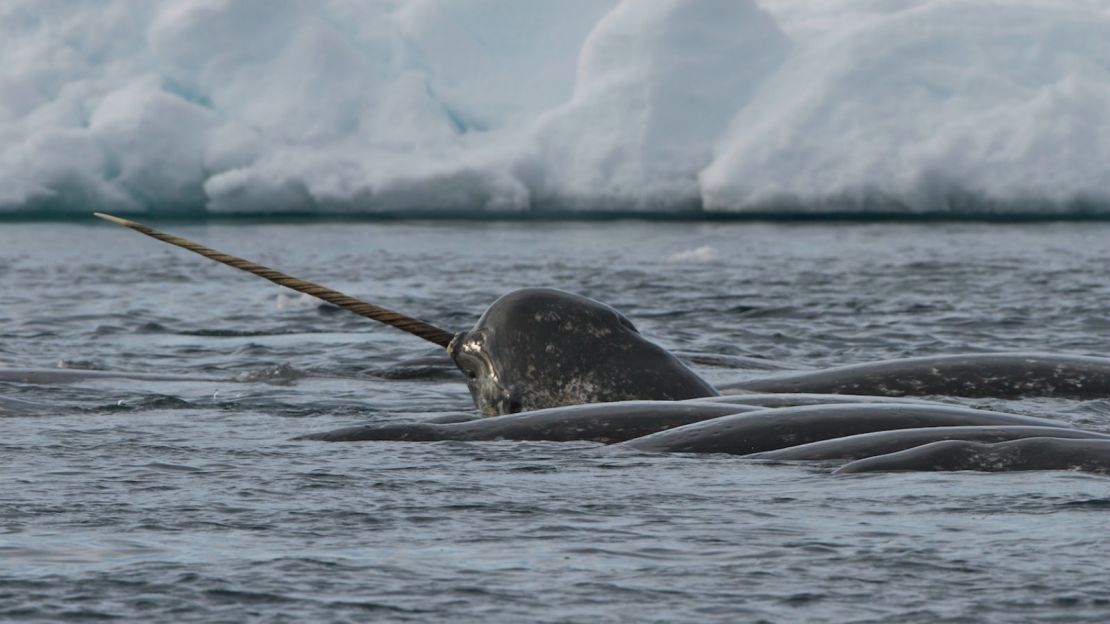
The male narwhal’s ivory tusk grows in a spiral directly through the whale’s upper lip. We can only imagine the freaking out that must have ensued when sailors first viewed them centuries ago. June, with round-the-clock daylight, is the best month to observe narwhals in Nunavut.
“The ice floe edge is a barrier that prevents the whales from migration further into the inlets,” says Thomas Lennartz, expedition director of Arctic Kingdom Polar Expeditions.“They congregate in ever greater numbers at this edge where we can see them from only meters away.” Arctic Kingdom runs eight-day/seven-night whale watching trips.
PO Box 6117, Iqaluit NU X0A 1H0, Canada; +1 888 737 6818
San Juan Islands, Washington state, U.S: For orcas
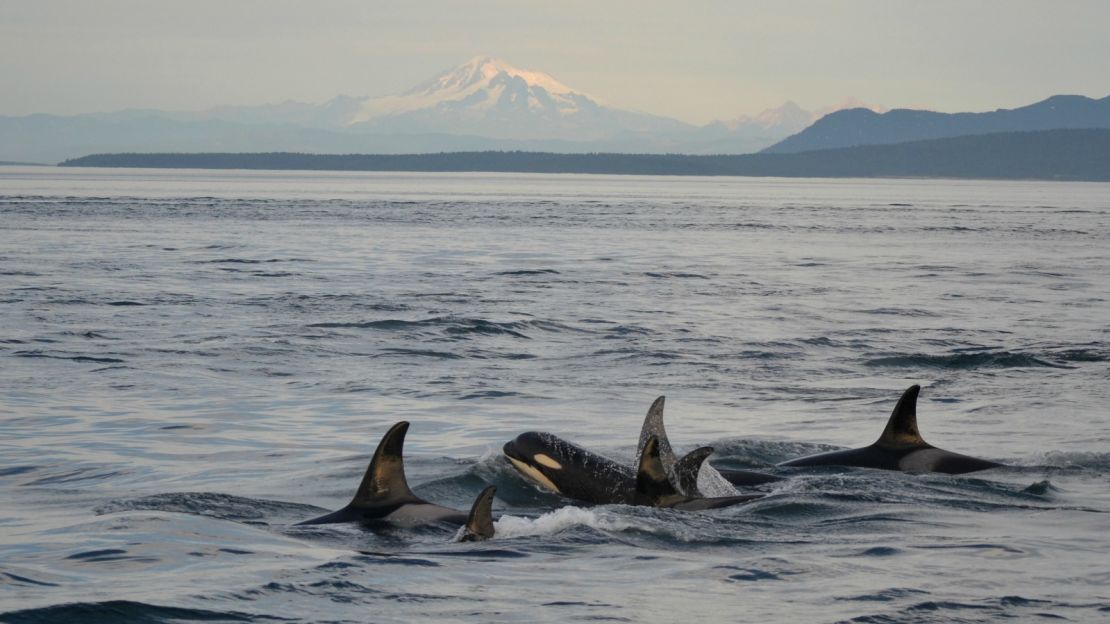
The waters surrounding San Juan Island are the No. 1 place in North America for seeing wild orca.
Orcas – known as killer whales – are technically dolphins. They are drawn to the western coast of the United States thanks to a large supply of Chinook salmon and return to the San Juan Islands to feed around the middle of April, remaining until the end of September.
Brian Goodremont, owner of San Juan Safaris Whale Watch & Wildlife Tours, suggests sunset tours for the most memorable whale watching photos. Or choose a high-speed zodiac tour for a higher-than-average chance of orca sightings.
San Juan Safaris runs daily tours from February through November.
10 Front St., Friday Harbor, WA 98250, United States; +1 360 378 1323
Strait of Gibraltar, Spain: For pilot whales
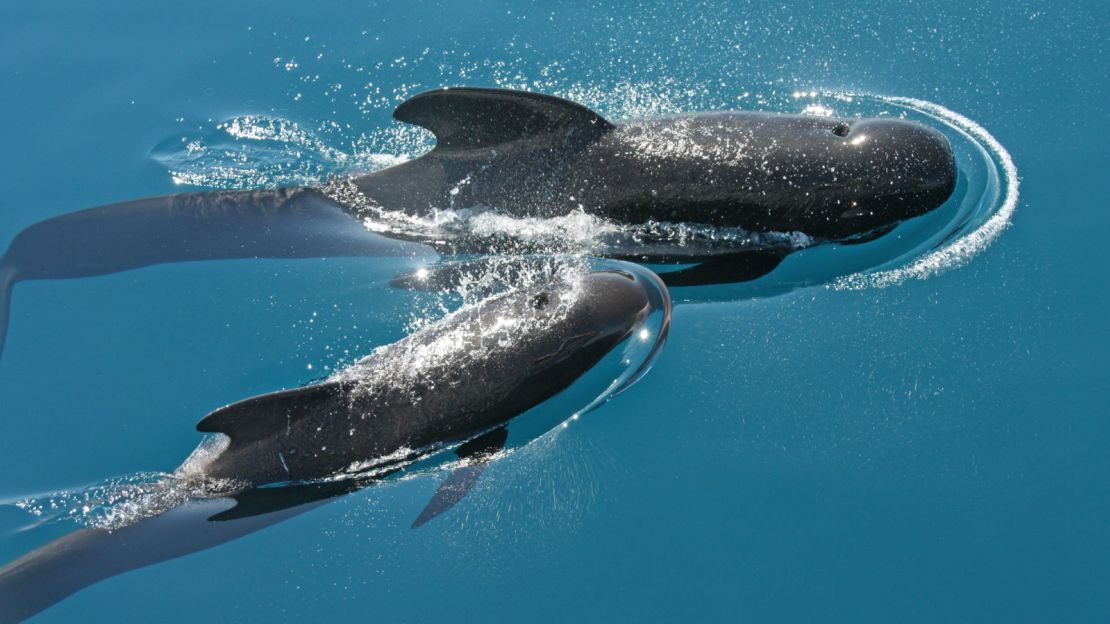
Pilot whales are some of the most social whales around – they will sometimes strand themselves on beaches en masse rather than abandon fellow members of the pod. An abundant supply of food means that the Strait of Gibraltar is a year-round home for them.
Katharina Heyer, president of FIRMM, an organization dedicated to research and protection of dolphins and whales, recommends that whale watchers allow several days in their itinerary to see the pilot whales, as strong winds can sometimes prevent boats from going out.
Firmm (Foundation for Information and Research on Marine Mammals) runs two-hour boat trips.
Pedro Cortés 4, E-11380 Tarifa, Spain; +34 956 62 70 08
Best places to swim with sharks
Hermanus, South Africa: For southern right whales
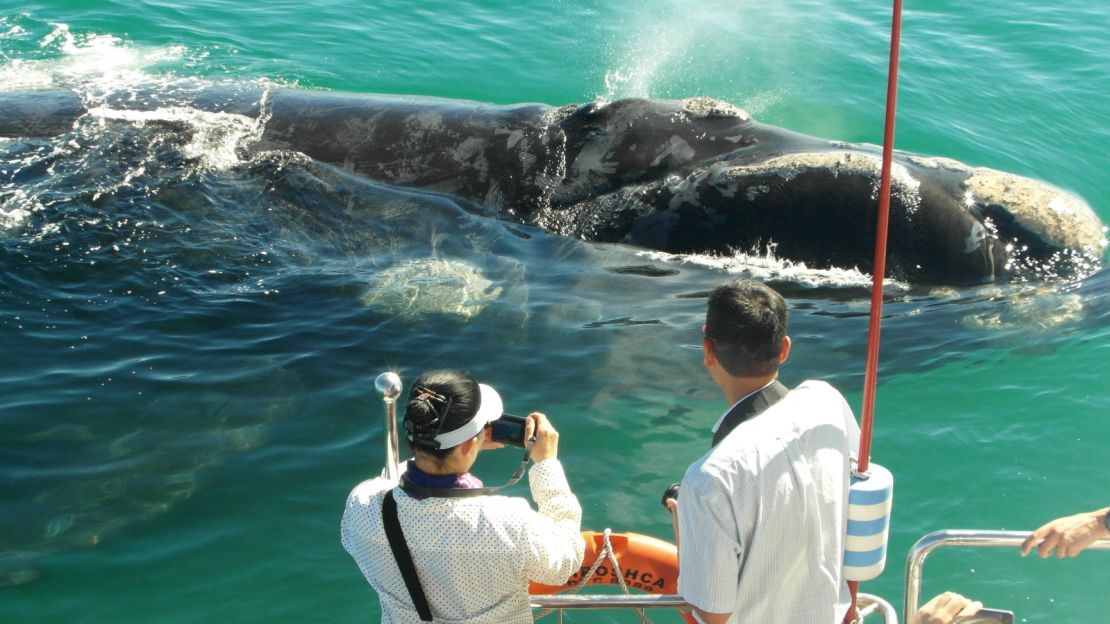
Hermanus is one of the best whale watching spots in the world – there are plenty of whales that can be seen playing mere meters from the shore.
Temperate waters and lots of sheltered bays make it an ideal mating and birthing site for the southern right whales.
“The southern right whales start appearing one by one as early as May and normally leave towards the end of November, while a cow with calf that was born a bit later could still be seen in January,” says Robin Alcock of Southern Right Charters Whale Watching.
The right whales perform a playful “sailing” exercise with their fluke (tail fins) – raising them to catch the wind. Southern Right Charters Whale Watching offers daily departures in season lasting between 1.5 and three hours.
The Whale Shack, New Harbour, Hermanus, South Africa; +27 82 353 0550
Kaikoura, New Zealand: For sperm whales
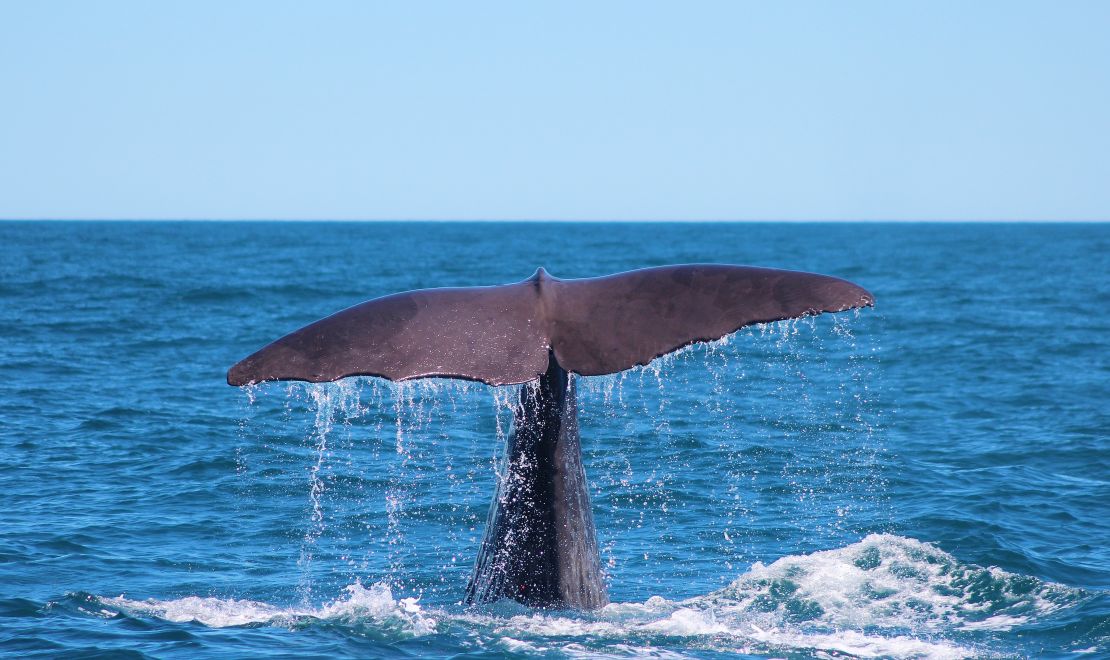
Sperm whales can grow up to 20 meters and live for 70 years. Kaikoura, New Zealand, is one of the few places in the world where they can be seen year-round.
“They congregate here because the two-kilometer-deep Kaikoura canyon runs right up against the coast, creating a rare system of sea currents that sustain an incredibly rich marine food chain,” says Lisa Bond, marketing and communications officer for Whale Watch Kaikoura.
“The rich abundance of fish ensures they make the waters of Kaikoura their home.” Whale Watch Kaikoura offers tours all year round.
The Whaleway Station, Whaleway Road, Kaikoura, New Zealand; +64 3 319 6767
Cancun, Mexico: For whale sharks:
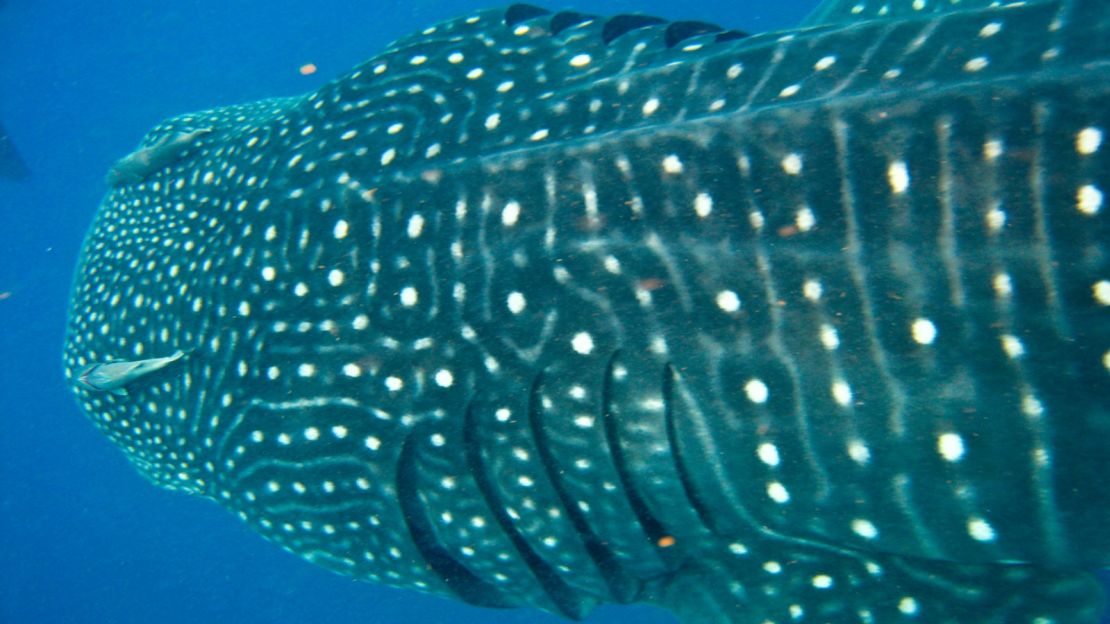
The giant jaws of the whale shark (up to 1.5 meters wide) might look like they could swallow a human whole, but these creatures feed mostly on plankton and are undisturbed by nearby swimmers.
Whale sharks aren’t strictly whales, but they’re some of the most astonishing marine creatures in existence – and swimming with them is a spectacular experience.
Swimming with whale sharks in the Philippines
“The best place to see whale sharks is the home of the largest aggregation of whale sharks in the world, Isla Mujeres, Mexico, just off the coast of Cancun”, says John Vater, co-founder of Ceviche Tours.
As many as 420 whale sharks have been sighted here in a single day. The best time to catch them is from the middle of May to the middle of September.
Ceviche Tours offers open boat tours (up to 10 people per boat) and private tours.
Isla Mujeres, Quintana Roo, México; whatsapp +011 52 998 241 3345
Nell McShane Wulfhart lives in Uruguay and writes about travel.
Editor’s note: This article was previously published in 2012. It was reformatted and republished in 2017.




